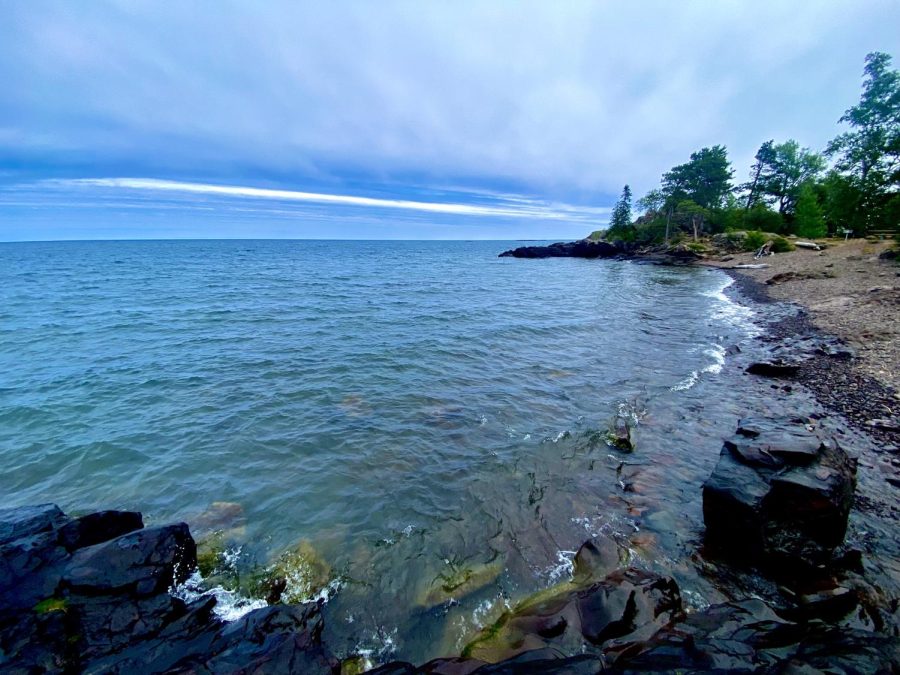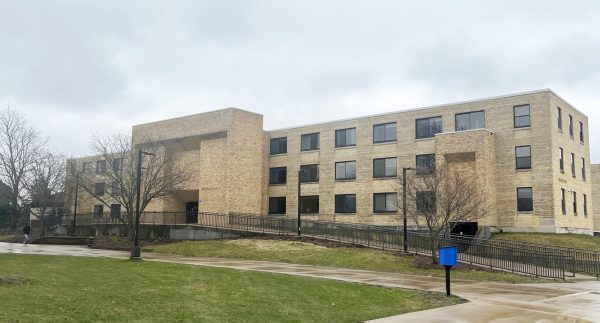Engineering Seminar: Defending the Great Lakes
UW-Platteville presents on invasive species control and freshwater resources
Dr. Thomas Zolper, Associate Professor of Mechanical Engineering, presented various projects on Nov. 2 in collaboration with the U.S. Army Corps of Engineers and the U.S. Geological Survey. The main project in this presentation involved carbon dioxide infusion at the Brandon Road Lock and Dam in Joliet, IL.
Dr. Zolper began his presentation by introducing six aquatic invasive species—the zebra mussel, viral hemorrhagic septicemia, round goby, sea lampre, black/bighead carp and water milfoil—all of which spread and disrupt native biology in different ways.
One of the major transportation systems for invasive species in the Great Lakes is the ballast tank on a ship. Ballast tanks serve to stabilize vessels by intaking water. This process occurs from port to port, and as a result invasive species can quickly invade port areas through the constant exchange of water.
“(The tanks) pick up those other things like round goby or water fleas, or the water milfoil or viral hemorrhagic septicemia, and they spread it through all the Great Lakes,” Dr. Zolper explained. “So we’re working on a project with USGS right now to treat those ballast tanks with a piscicide … the intent is to avoid these major fish kills.”
Another major transportation system is on boat propellers. Zebra mussels distribute themselves by securing themselves to boat propellers and enjoying the free ride through the U.S. waterways. Dr. Zolper noted that over 20 states reported zebra mussel occurrences by 1994, which since then has only worsened.
To combat this, UW-Platteville engineering students have investigated and designed various applications that disrupt biological activity of the zebra mussel. A pancake-like batter soil derivative, which poisons the digestive system of the zebra mussel, can be introduced to invaded lakes and ponds. Students are also working with the Mississippi River Museum to investigate the effects of carbon dioxide content of water on zebra mussel veligers, the larval stage of the mussel.
Round goby, sea lampreys and carps transport themselves through ballast tanks, but also- spread through waterways on their own. Round goby and sea lampreys penetrate the Great Lakes waterways from the Atlantic coast while the carps have been working their way up the Mississippi River Basin from the south.
The process of defending the Great Lakes is twofold: treat affected areas to remove invasive species and fortify barriers or thresholds between affected and unaffected areas to prevent further invasion.
Both the Mississippi River Basin and the Great Lakes Basin have their unique invasions and are being defended in the two-prong strategy. The two interface with each other mostly on the lake coasts of Wisconsin, Illinois, Indiana and Michigan.
A vital connection between the two water systems is the Brandon Road Lock and Dam. The USACE has been implementing many different methods to minimize carp invasion, ranging from targeted methods of harvesting, netting and poisonous carp food to general methods of electric barriers, acoustic deterrents and the carbon dioxide flushing lock.
Carbon dioxide infusion operates by introducing dissolved carbon dioxide into parcels of water, lowering the pH and making it unpreferable for carp. The infusion occurs in water near the entrance of the waterway and lowers the possibility of invasion.
The carbon dioxide infusion project began at UW-Platteville in 2016. The next year, with more grant funding, the project expanded to include the USGS laboratory in La Crosse in 2017.
A full-scale installation was proposed in 2018 for a lock and dam in LaClaire, IA, but was denied by the Iowa Department of Natural Resources. Installations were made for the Fox Locks in Kaukauna, WI, in 2019.
The ultimate goal is to improve carbon infusion deterrent methods at the Brandon Road Lock and Dam and in other vital convergent points across the country. Through the years, the carbon infusion project included lab studies, field studies and senior design projects to analyze and improve the effectiveness of the system.
This past spring, Dr. Zolper and his colleagues published research regarding the effectiveness of design improvement methods in the American Society of Civil Engineers Journal of Environmental Engineering. The full article is free to read.














